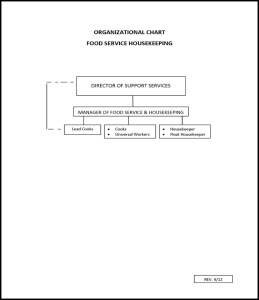INSTRUMENT/DOCUMENT
The Student Perception of Care Survey developed by HEC.
MEASURE
Average “cluster scores” for each of 7 subsection: Environment of Care; School/Education; Medical/Dental; Staff; Treatment; Program, plus an average of the total ratings for survey. Scores above reported by campus and in aggregate form for the agency.
The PM consists of the averaged scores themselves (cluster scores and survey total score; campus + agency), and the differences between (+/-) the current quarter and those of the last quarter and the previous year.
ADMINISTRATION CYCLE
New Students
Only students who have been at a Hillcrest campus for more than 90 days will participate in the SPC. Students will participate in the SPC on each anniversary of their admission to HEC.
During Placement
The SPC is administered by the program’s designated staff member once each year on the anniversary of the student’s admissions to HEC. The SPC will eventually be scored (sub scores and total) by computer.
As Discharge Approaches
If the student nearing discharge has had the SPC during the past 6 months, the SPC will not be administered again. If the student nearing discharge has not had the SPC during the past 6 months, the student will participate in the SPC within 15 – 30 days of the projected discharge date.
Regarding ITU students, only students who have been at the ITU for more than 90 days should participate in the SPC. If the annual anniversary of the student’s admission to HEC will not occur prior to the student’s scheduled discharge/transfer from the ITU, the SPC should be administered to the student as discharge approaches, as described above.
ADMINISTRATION & DATA MANAGEMENT
The SPC is administered by the program’s designated staff member. It will eventually be computer scored. The designated campus person reports all sub and total scores to the IS Director within the first two weeks of the end of each month. (As noted below, the campus IOP Committee monitors instrument administration and CPM data reporting.)
The IS Director maintains the reported data and computes the campus and agency data for quarterly and annual reporting.
PERFORMANCE MEASURE REPORTING
By the 20th day of the following each quarter, the IS Director issues a quarterly report on the Student Perception of Care Measure. Current quarter data is compared with the data from the previous quarter and with data from the same quarter from the previous year.
The IS Director provides interpretation of the quarterly data.
In addition to the sub, total and comparative scores, the analysis of both quarterly and annual data will include: N/total #; mean; median; frequency ranges (frequency w/in each segment in the range); mode (the +/- score that shows up most often).
PM OVERSIGHT
Because the numbers of SPC administered vary each month, depending on the number of students whose admission anniversaries occur and their length of placement at that time, the campus IOP Committee is responsible for overseeing the CS Performance Measure.
The IOP insures that 1) the tests are being administered and administered according to the schedule required by HEC procedures; 2) the CPM data is reported to the IS Director and reported according to the schedule required by HEC procedures.

